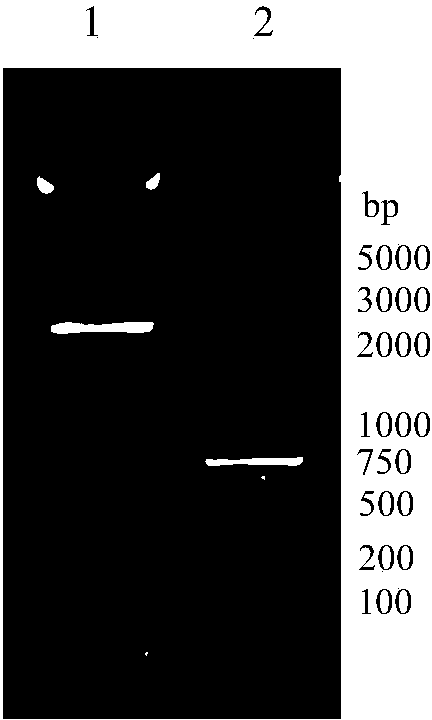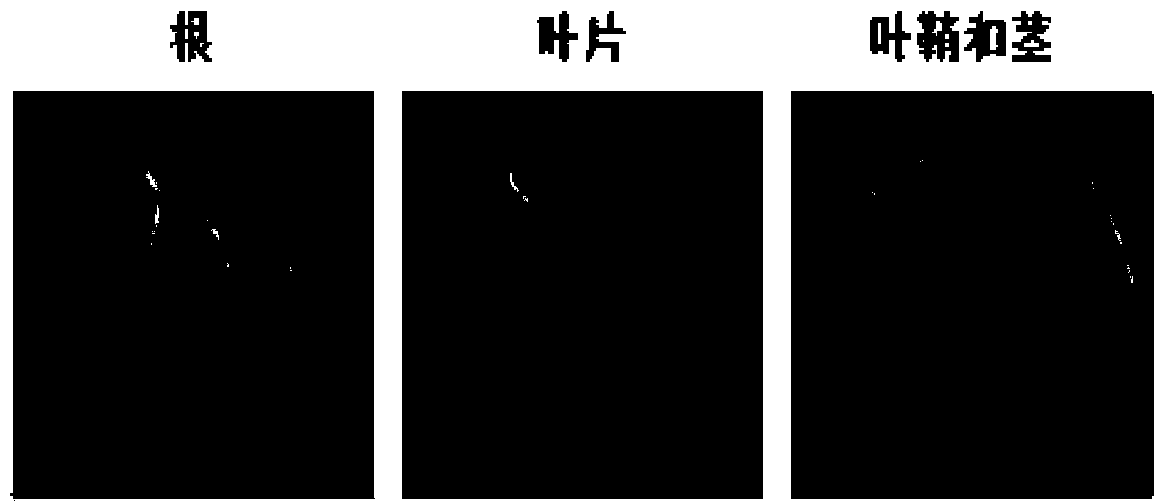Rice-derived endosperm specific expression promoter and application thereof
An expression cassette and molecular technology, applied in the application, introduction of foreign genetic material and modified cells, angiosperms/flowering plants, etc., can solve the problem of consumption of bioenergy, adverse effects of biological growth and development on metabolites, and expression intensity that cannot meet the requirements of the transgenic industry To meet the needs of globalization and other issues, to achieve great application prospects, increase the added value of science and technology, and improve the effect of seed quality
- Summary
- Abstract
- Description
- Claims
- Application Information
AI Technical Summary
Problems solved by technology
Method used
Image
Examples
Embodiment 1
[0044] Example 1, the acquisition of plant seed endosperm-specific expression promoter SSP-1
[0045] Genomic DNA was extracted from rice Kitaake leaves by CTAB method, and the promoter SSP-1 was amplified by PCR using it as a template and P1 and P2 as primers. The reaction system is: 1 μl of 10 μM forward and reverse primers, 10×Ex Buffer 2 μl, genomic DNA 1 μl (10 ng), ExTaq (TaKaRa) 0.5 unit, add ultrapure water to 20 μl; the reaction program is: 94 ° C for 5 minutes, then 94 ° C 1min, 55°C 1min30sec, 72°C 2min30sec, 30 cycles, finally 72°C, 10min. The target band of 2.4kb was amplified by PCR. The amplified product was recovered, directly connected to the pMD18-T vector (purchased from TaKaRa Company), and sequenced. The results showed that the promoter SSP-1 (2416bp) shown in SEQ ID No.1 was amplified. The recombinant vector containing the promoter SSP-1 was named as pMD-SSP-1 by sequencing detection.
[0046] Wherein, the forward primer (P1) sequence of PCR is: 5'-GG ...
Embodiment 2
[0047] Example 2, Plant Seed Endosperm-Specific Expression Promoter SSP-1 Promotes the Specific Expression of Exogenous Genes in Rice Seed Endosperm
[0048] 1. Construction of a plant expression vector containing an exogenous gene expression cassette promoted by SSP-1
[0049] Digest pMD-SSP-1 with Sal I and Hind III, recover a 2416bp enzyme-cut fragment containing the promoter SSP-1, and insert the fragment between the Sal I and Hind III enzyme recognition sites of pGPTV-35S-HPT During the period, the recombinant expression vector obtained by replacing the fragment between the Sal I and Hind III enzyme recognition sites of pGPTV-35S-HPT with the promoter SSP-1 shown in SEQ ID No.1 was named pGPTV-SSP-1- Gus. The schematic diagram of the structure of pGPTV-SSP-1-GUS is shown in figure 1 As shown, it contains the GUS gene expression cassette, which is composed of the promoter SSP-1, the exogenous gene GUS gene (UidA) driven by the promoter SSP-1, and the terminator Tnos. Sa...
PUM
 Login to View More
Login to View More Abstract
Description
Claims
Application Information
 Login to View More
Login to View More - R&D
- Intellectual Property
- Life Sciences
- Materials
- Tech Scout
- Unparalleled Data Quality
- Higher Quality Content
- 60% Fewer Hallucinations
Browse by: Latest US Patents, China's latest patents, Technical Efficacy Thesaurus, Application Domain, Technology Topic, Popular Technical Reports.
© 2025 PatSnap. All rights reserved.Legal|Privacy policy|Modern Slavery Act Transparency Statement|Sitemap|About US| Contact US: help@patsnap.com



